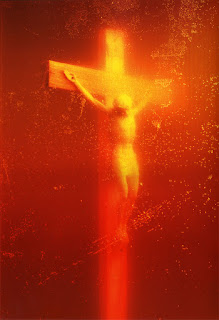I recently performed the following evolving essay on Art as Novelty Object at Blowhard Cabaret in Bloomington and at the Soft River Reading Series book release for James Payne's "Things Just Aren't They" at General Public Collective.
I hope to allow the reader an opportunity to meditate on the HA-larious comedy jokes throughout the text that I may have clumsily sped through IRL.
When I introduce the subject of money to my highschool art students I say this:
Artists have a complicated relationship to money.

I ask if anyone in their life has expressed skepticism at their emerging creative proclivities, and if so, why they think that might be.
Perhaps their families’ concerns are borne of a desire to shield their child from toil without equitable reward.
Art seems to occupy the margins of everyday life—a destination in a museum or in a fountain downtown—winning it low regard for its integrality.
But maybe the loved one’s esteem for art is low for a reason.
Maybe it has been battered by the displays of irreverence, the disregard for beauty, the indiscretions they’ve seen passed off in the service of contemporary art.

The Piss Christs, the Poop Marys, the yam and chocolate sauce abuse trickling onto the headlines of the (tucked away) sections of the Sunday paper.

These loved ones may already have absorbed the belief that artists are tricksters, scammers seeing what they can get away with.
This case isn’t really helped by Andy Warhol.

It also ins’t helped by the fact that artists ARE tricksters, devoted to trouble making and its handmaiden play.
Warhol famously churned out prints of canned soups at his “Factory,” enamored by the normalness of the labels. He constructed hollow versions of Brillo pad boxes and arranged them in tiered pyramids to echo grocery store displays, a stylized parody of work that got more complex as it began to sell.
Was his banality sincere? Was he a swindler or simply inhabiting the artist’s role of dissolute child at play?
An eymology lesson:
The Latin word for play is “ludus,” meaning game, or sport but also “poetic play,” The Dance, the differance.
Ludus is also the root for the word “Elude,” to escape or evade, especially in a cunning way.
Kids play in the dirt, outside with balls or on blacktop.
Other kids play indoors with objetcts too fussy to expose to the elements, dolls they force to french kiss on the carpet or plastic implements employed in precocious games of DOCTOR.

They use crayons and paints to make waxy portraits of their dogs or their dads’ heads covered with cuts.

Above are images by Christa Dichgans, pop still lifes featuring inflatables that will wilt, sunglasses that will break and toy trucks that will end up in a Goodwill bin or garage sale.

Adults play the same way, indulging in art as momentary evasion of functionality, an open ended transaction not necessarily resulting in the exchange of bucks, unless it does.

Objects adults collect to admire inside their packaging or break out for rare indulgences are termed “Novelties,” or even grosser, adult toys. But why not? Masturbation or non-reproductive sex are our favorite evasions of capital, outside the script but for the billion dollar industry around them.

Novelty may not be the most sensible way to brand vibrators, which seem to have some quanitifable outcome.
Novelties have more in common with Art than toys, including a percieved lack of utility, a distinction from durable goods.

Mark Newgarden, author of Cheap Laffs: The art of the novelty product and co-creator of Garbage Pail Kids trading cards says novelties are “Entertainment you can participate in, not just by clicking on it.”
Novelties invent situations and provoke reactions, whether the joker takes the novelty out of the house or not.

This is paralleled in contemporary art whether it be food you can’t eat, stores you can’t enter, or products that will evaporate upon purchase.

This investigation ends with questions:
What do you believe to be the important distinctions between art, novelty, and toy?
Have you ever used an art object or novelty incorrectly?
Can you invent advantageous ways to misuse art objets?

No comments:
Post a Comment